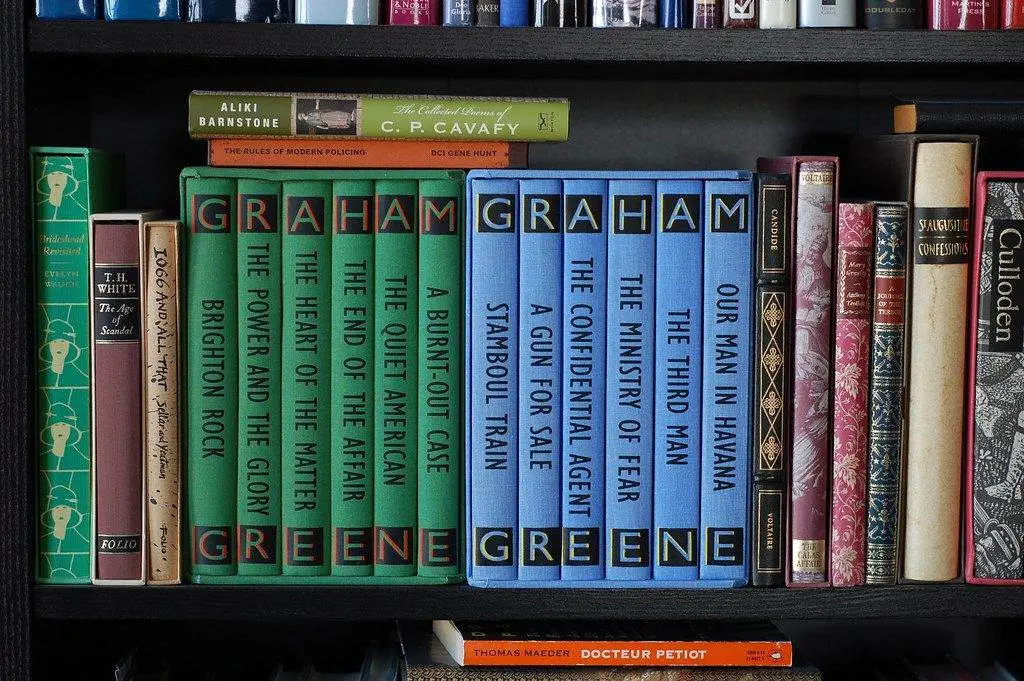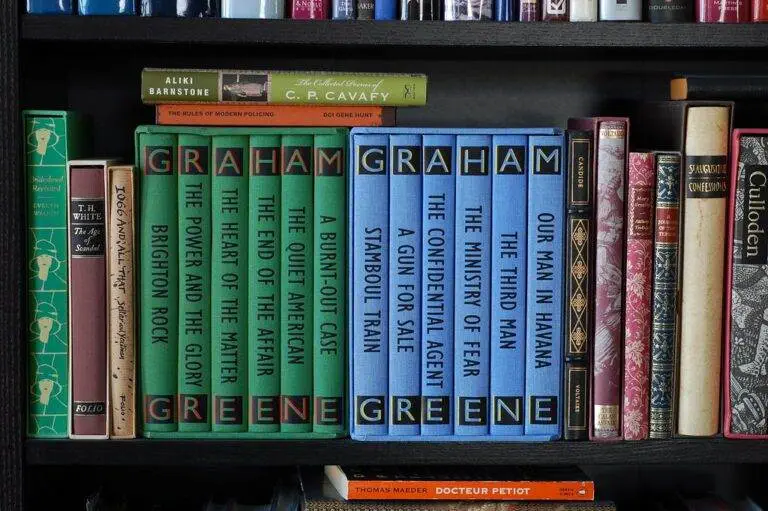Unraveling the complexities and nuances of Graham Greene‘s “The Heart of the Matter,” this listicle delves into pivotal themes, character analyses, moral crisis, and thought-provoking insights. From exploring the moral dilemmas faced by its protagonist to examining the novel’s profound commentary on human nature, each point offers a fresh perspective on this timeless literary work. Delving deep into Greene’s masterful storytelling, readers will gain a richer understanding of the book’s enduring relevance and impact.
Table of Contents
Prepare to embark on an enlightening journey through “The Heart of the Matter” as we dissect its compelling narrative layers and unveil its underlying messages. Scroll down for comprehensive reviews that illuminate key aspects of this literary gem, book.
Brief Plot Overview of The Heart of the Matter
Scobie, a British colonial police officer, finds himself entangled in a web of moral dilemmas as he navigates the complexities of human nature and the consequences of his choices. His affair with Helen Rolt, wife, leads to a spiral of deception and guilt, showcasing the intricate ways in which individuals grapple with their internal conflicts.
The story delves into the inner turmoil faced by Scobie, portraying how his decisions impact not only himself but also those around him. This introspective exploration sheds light on the intricacies of ethical decision-making and its repercussions on personal relationships.

Throughout “The Heart of the Matter,” Graham Greene masterfully crafts a narrative that resonates with readers by presenting an authentic portrayal of human frailty and resilience. The novel serves as a poignant reminder that even well-intentioned actions can lead to unforeseen ramifications, encapsulating the timeless struggle between one’s principles and desires.
Greene’s compelling storytelling weaves together themes of love, loyalty, betrayal, and redemption against the backdrop of wartime West Africa. By immersing readers in Scobie’s tumultuous journey, “The Heart of the Matter” book offers profound insights into the human psyche while captivating audiences with its emotionally charged narrative.
Major Characters: Henry Scobie, Louise Scobie, Helen Rolt
Henry Scobie grapples with the conflicting emotions of duty and desire in the story. His unwavering sense of responsibility as a police officer clashes with his longing for love, leading to an internal struggle that shapes the narrative’s emotional depth.
Louise Scobie epitomizes devout Catholicism while navigating her husband’s actions. Her unwavering faith is tested as Louise, Henry’s wife, confronts the moral dilemmas arising from his decisions, providing a poignant exploration of religious devotion in the face of personal turmoil.
Helen Rolt symbolizes temptation and forbidden love. As a representation of allure and seduction, she embodies the complexities surrounding illicit desires and their impact on individuals like Henry, adding layers to the exploration of human frailty within the story.
The characters’ intricate dynamics illuminate themes such as morality, fidelity, and human vulnerability against a backdrop rich with moral ambiguity.
Themes: Guilt, Duty, and Betrayal
Graham Greene’s exploration of guilt in “The Heart of the Matter” book reveals the profound impact it has on individuals. The characters grapple with moral crises, leading to a sense of damnation and an internal struggle for redemption.
The theme of duty underscores the complex internal conflict faced by the characters. They are torn between their personal desires and their responsibilities, highlighting the intricate nature of human morality. This struggle not only adds depth to the characters but also serves as a reflection of real-life ethical dilemmas.
Betrayal is portrayed through the characters’ moral compromises and deceitful actions. Their choices reflect Greene’s portrayal of human nature, where individuals are often driven to commit unforgivable sins in pursuit of personal gain or survival. This exploration delves into psychological fiction, offering readers a glimpse into the darker aspects of human behavior and life.
Greene’s emphasis on these themes contributes to his reputation as a profound moralist in literature. Through “The Heart of the Matter,” a book, he challenges readers to confront questions about faith, responsibility, and morality. The book serves as a poignant reminder that even in moments of glory or passion, one cannot escape from facing their own demons.
Setting: West Africa during World War II
The novel “The Heart of the Matter” is entrenched in a politically charged and morally ambiguous environment. The setting, a British colony on the West African coast during World War II, serves as a crucible for exploring complex ethical dilemmas.
The backdrop of World War II adds layers of depth to the characters’ experiences. It intensifies their moral struggles and forces them to confront difficult choices that test their integrity. This historical context amplifies the tension and gravity of their decisions, making the narrative more compelling.
The African setting significantly influences the characters’ decisions and moral struggles. Greene skillfully weaves cultural nuances into his storytelling, showcasing how the colonial atmosphere shapes individual choices and societal dynamics. The clash between European values and indigenous traditions creates an intricate tapestry against which ethical conflicts unfold.
For instance, Scobie’s internal turmoil about love, duty, and faith is heavily influenced by the unique social landscape of West Africa during this period. His struggle to reconcile personal morality with external pressures epitomizes how deeply ingrained the setting is in shaping character motivations.
Greene’s Personal Connection to the Story
Greene’s first-hand experiences working for the British government in West Africa deeply influenced his writing. His exposure to the region’s political and social complexities provided him with a rich foundation for crafting authentic narratives within “The Heart of the Matter.”
Observing human behavior in challenging circumstances allowed Greene to infuse his novel with genuine insights into the human condition, making his characters more compelling and relatable. This personal connection enabled him to authentically capture the moral ambiguity that often arises in difficult situations, adding depth and complexity to his portrayals.
For instance, encounters with individuals involved in black market activities during his time in West Africa likely contributed to Greene’s nuanced depiction of characters engaged in morally ambiguous behaviors within the novel. This firsthand exposure would have given him unique perspectives on ethical dilemmas and shades of grey present within human nature.
Critical Acclaim and Initial Reception
“The Heart of the Matter” garnered widespread critical acclaim upon its release. Critics lauded Graham Greene’s adept exploration of moral dilemmas and psychological depth within the novel. The work was considered a significant contribution to 20th-century literature, solidifying Greene’s reputation as a masterful storyteller.
The novel’s profound examination of human relations, kindness, and love resonated with readers, leading to an overwhelmingly positive reception. Its portrayal of complex ethical choices and the inner turmoil faced by the protagonist captivated audiences, making it a thought-provoking read for many.
In terms of literary impact, “The Heart of the Matter” stands out as one of Greene’s most celebrated works alongside “Brighton Rock.” It has been widely acknowledged as an exemplary demonstration of Greene’s capacity to delve into the depths of human experience while shedding light on universal truths about morality and love.
The Novel’s Place in Greene’s “Catholic” Works
Greene’s Catholic faith deeply influences his literary exploration, prominently seen in “The Heart of the Matter.” The novel delves into sin, redemption, and spiritual conflict, embodying Greene’s recurrent themes. This reflects how his Catholicism shapes the moral landscape within his works.
“The Heart of the Matter” is a pivotal part of Greene’s body of work that grapples with religious and ethical questions. It showcases the proper place of love and man within his writing, emphasizing their significance as integral components rather than mere plot devices.
Throughout the novel, Greene masterfully weaves in elements such as catholicism and church-related motifs to underscore profound existential dilemmas faced by its characters. These elements create a rich tapestry that further emphasizes the depth with which he explores matters related to faith and morality.
In essence, “The Heart of the Matter” stands as an exemplar within Greene’s collection for its unyielding portrayal of human struggle against moral conflicts through a lens deeply influenced by his Catholic beliefs.
Read These Too:
Adaptations: 1953 Film and Beyond
The 1953 film adaptation of “The Heart of the Matter” significantly expanded the novel’s reach, introducing its themes of love and man to a broader audience. This cinematic portrayal brought Graham Greene’s narrative to life, shedding light on its exploration of moral dilemmas and human struggles.
In addition to the film adaptation, numerous stage adaptations have played a pivotal role in perpetuating the story for successive generations. These live performances have provided an immersive experience for audiences, further solidifying the enduring relevance of Greene’s work.
The continued interest in potential adaptations underscores the timeless appeal of “The Heart of the Matter.” Over time, this classic has maintained its allure, inspiring creators across different mediums to reinterpret and reimagine its profound themes. The ongoing pursuit of new adaptations serves as a testament to the novel’s lasting impact on literary and cultural landscapes.
“The Heart of the Matter” is hailed by Time Magazine as one of Greene’s most powerful novels. Its exploration of complex human emotions within a loveless marriage struck a chord with readers worldwide. Such recognition from reputable sources attests to both the universal significance and contemporary relevance encapsulated within this literary masterpiece.
Literary Techniques: Greene’s Use of Irony and Foreshadowing
Greene skillfully employs irony to accentuate the moral conflicts and contradictions within his characters. By doing so, the man adds depth to their inner struggles, making them more relatable and compelling for readers. “The Heart of the Matter,” Scobie’s actions often carry a sense of tragic irony as he tries to navigate his ethical dilemmas and love.
Foreshadowing is another key literary technique used by Greene. It infuses the narrative with suspense and complexity, keeping readers engaged throughout the novel. The subtle hints dropped through foreshadowing create an air of anticipation that propels the story forward while allowing readers to piece together clues about future events.
These literary techniques, love, are pivotal in shaping the enduring impact of “The Heart of the Matter” on its audience. The interplay between irony and foreshadowing not only enriches the reading experience but also prompts deeper contemplation about human nature and morality long after finishing the book.
Legacy and Influence on Modern Literature
“The Heart of the Matter” remains a revered piece of literature due to its timeless exploration of love and human nature. Its enduring influence is evident in contemporary novels that tackle similar themes of morality and conscience. Graham Greene’s masterful storytelling ensures that the novel continues to be relevant in discussions about ethics and personal responsibility.
- The novel’s enduring legacy is reflected in its continued inclusion in modern library collections, showcasing its significance as a classic work.

- Many modern language novels draw inspiration from “The Heart of the Matter,” demonstrating its lasting impact on literary works addressing complex moral dilemmas.
- Greene’s portrayal of the internal struggles faced by his characters has influenced a myriad of authors, highlighting the profound effect his writing has had on modern literature.
Final Remarks
In conclusion, “The Heart of the Matter” by Graham Greene delves into complex themes of guilt, duty, and betrayal in the backdrop of West Africa during World War II. The novel not only showcases Greene’s literary prowess through his use of irony and foreshadowing but also reflects his personal connection to the story as it holds a significant place among his “Catholic” works. Furthermore, the enduring legacy and influence of the novel on modern literature, as well as its adaptations, highlight its timeless relevance and impact.
For those intrigued by thought-provoking narratives that delve into the intricacies of human nature and moral dilemmas, “The Heart of the Matter” offers a compelling read. Delve deeper into the layers of this literary masterpiece to unravel its profound insights and explore the broader implications it holds for understanding the complexities of human existence.


